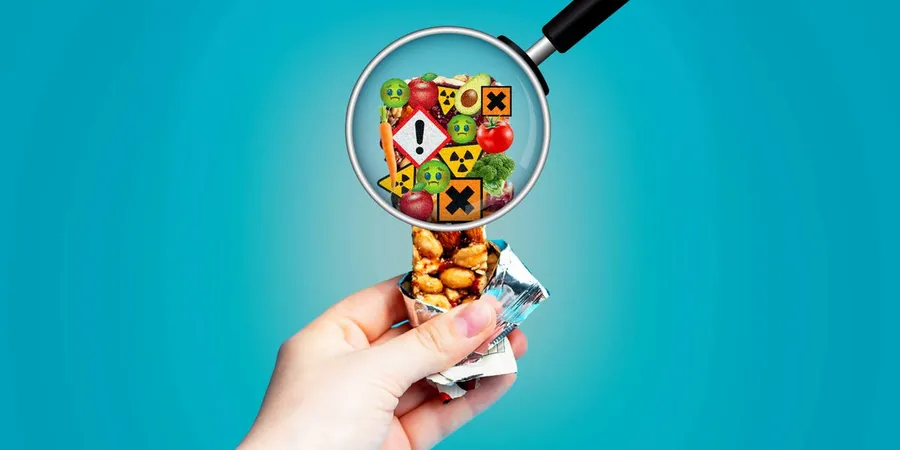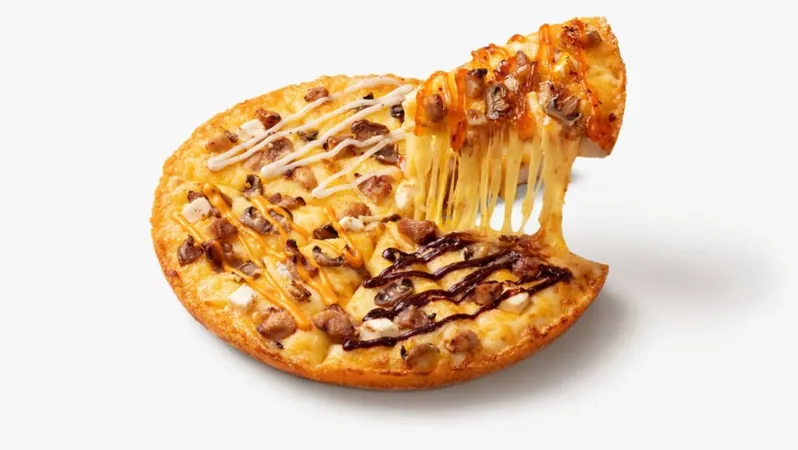
Why Cutting Back on Ultra-Processed Foods is Harder Than You Think
2025-05-15
Author: Ming
The Supermarket Struggle for Healthier Choices
A few months ago, I embarked on a quest for healthier breakfast options and found myself staring down the daunting oats aisle of my local grocery store. With dozens of choices, each looking equally processed, the decision left me feeling overwhelmed and emotionally drained. This experience is becoming all too common for many Americans who want to eat healthier but are lost in a sea of ultra-processed food options.
The Health Risks of Ultra-Processed Foods
The alarming truth is that ultra-processed foods (UPFs) make up about 57% of the average American's diet, with even higher consumption rates among children and teens. The link between UPFs and serious health issues—including premature death, cognitive decline, and various chronic diseases—has become increasingly apparent. These foods are tied to a litany of ailments such as heart disease, inflammation, and even cancer.
Decoding the Dangers of UPFs
Despite the known risks, understanding which UPFs are particularly harmful remains a challenge for researchers. Surprisingly, there’s no universally accepted definition of what makes a food 'ultra-processed.' Foods like olive oil and frozen strawberries may be processed, but they fall under minimal processing rather than the problematic UPFs.
The Nova classification system, developed by Brazilian scientists, categorizes foods from unprocessed to ultra-processed, identifying UPFs as those laden with substances extracted from whole foods or synthesized in labs. These foods often come packed with unhealthy ingredients like refined sugars, unhealthy fats, and low nutrient content. This means familiar snacks like sweetened yogurts and instant soups fall into this troubling category.
The Complicated World of Food Processing
Research indicates that UPFs can unintentionally alter our eating habits. One key finding shows that people tend to consume about 500 calories more when eating an UPF-rich diet, contributing to weight gain. While one might assume this is due to the appealing taste and high sugar content, other factors may play a role. UPFs may not satiate hunger effectively, leaving people craving more.
Emerging theories suggest that artificially created additives, emulsifiers, and chemical leaching from packaging could further complicate how these foods affect our health. For example, some emulsifiers found in processed foods may contribute to gut inflammation, which impacts nutrient absorption.
Navigating the UPF Conundrum
For those trying to make healthier choices while researchers delve deeper into the world of UPFs, there are strategies to consider. Opt for products low in added sugars, which are often indicators of less healthy UPFs. Integrating omega-3-rich foods like fish and loading up on fiber—aiming for 30 to 38 grams daily—can also help counterbalance the effects of UPFs.
Innovations to Simplify Healthier Eating
To ease this struggle, scientific efforts are underway. A new database called TrueFood aims to sift through the complexities of UPFs, providing consumers with better guidance. Experts advocate for improved food labeling and industry regulations to promote healthier product offerings. As Marion Nestle emphasizes, individuals shouldn't have to navigate the food landscape alone; significant systemic changes are necessary.
So, the next time I find myself in the oats aisle, I hope to have better tools at my disposal. Until then, I’ll employ the strategies shared here and stick to whole foods as much as possible.




 Brasil (PT)
Brasil (PT)
 Canada (EN)
Canada (EN)
 Chile (ES)
Chile (ES)
 Česko (CS)
Česko (CS)
 대한민국 (KO)
대한민국 (KO)
 España (ES)
España (ES)
 France (FR)
France (FR)
 Hong Kong (EN)
Hong Kong (EN)
 Italia (IT)
Italia (IT)
 日本 (JA)
日本 (JA)
 Magyarország (HU)
Magyarország (HU)
 Norge (NO)
Norge (NO)
 Polska (PL)
Polska (PL)
 Schweiz (DE)
Schweiz (DE)
 Singapore (EN)
Singapore (EN)
 Sverige (SV)
Sverige (SV)
 Suomi (FI)
Suomi (FI)
 Türkiye (TR)
Türkiye (TR)
 الإمارات العربية المتحدة (AR)
الإمارات العربية المتحدة (AR)